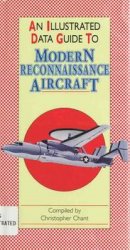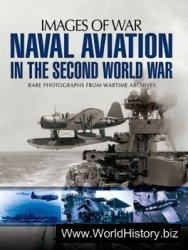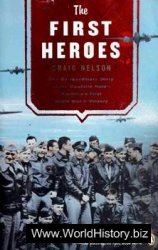DDL DANISH AIRLINES (DET DANSKE LUFTFARTSELSKAP, A. S.): Denmark (1918-1951). This Danish airline is formed at Copenhagen on October 6, 1918; however, flight operations do not immediately commence. Nevertheless, on August 25, 1919, the pioneer is invited to participate in the organizational meeting of the International Air Traffic Association (IATA) at The Hague.
With a government concession in hand to operate over foreign routes, initial Friedrichshafen FF 49 floatplane service is inaugurated from Copenhagen on August 7, 1920, across the Baltic to Warnemunde.
Meanwhile, on August 3, the company joins with KLM (Royal Dutch Airlines, N. V.) and Deutsche Luft Reederei, GmbH. to form the world’s first airline pooling arrangement. This “Europa Nord-West Flug” coordinates the northwestern European schedules of the three airlines and allows flights, beginning on September 1, from Rotterdam-Copenhagen via Amsterdam and Hamburg. The service will end in 1921.
In 1923, the airline receives a mail contract for the route and, thus subsidized, is able to provide daily flights (carrying 414 passengers) until October 17.
Summer-only flights continue throughout the decade, some of which are provided by four Farman F-121 Jabirus delivered between May and August 1926, including two license-built by Orlogsvaerftet. The French-made or licensed aircraft are placed into service on a Copenhagen to Cologne via Hamburg frequency.
Three surviving F-121s are withdrawn and broken up in March 1931; DDL’s fleet comprises four Fokker F-VIIs.
Two years later, on May 11, 1933, a Fokker F-XII, license-built by Orlogsvaerftet, is delivered and christened Merkur. Nine days later it enters service on the Copenhagen to Berlin frequency. A second F-XII, the Kronprinsesse Ingrid, is purchased directly from Fokker and is received on May 13, 1935. The two F-XIIs are employed to initiate two new frequencies out of Copenhagen, one to Berlin and one to Hamburg. They are also employed on a Copenhagen to Hanover night mail run.
On June 17, 1936, an F-VIIa slams into the cliffs of Sognefjord in dense fog (seven dead). On August 30, an F-VIIa crashes near Bergen; all seven aboard are hurt.
Late in the year, the subsidiary Provins Luftfartselskap, A. S. (PLS)
Is organized to initiate domestic operations; the initial route, begun in June 1937, is from Copenhagen to Esbjerg, with Aalborg later added.
Local service traffic proving thin, the domestic exercise is cut before year’s end.
In the spring of 1938, the carrier prepares to receive a pair of Focke Wulf Fw-200 Condors ordered from Germany the previous year. The first is delivered to Copenhagen by Kurt Tank on July 14 and is christened Dania and is employed to launch international service. Indeed, when the Dania first lands at London (Croydon Airport) on July 28, the arrival marks the first flight of a Danish transport to the U. K.
Regularly scheduled Copenhagen-London via Hamburg service begins on September 1 in cooperation with Deutsche Lufthansa, A. G.
(DLH).
The second Fw-200 Condor is received in November; christened Jut-landia, it is placed on a route from Copenhagen-Vienna via Berlin.
Meanwhile, representatives from the governments of Sweden, Norway, and Denmark and their national airlines agree to pursue the idea of joint Bergen-New York flying-boat service in cooperation with Pan American Airways (PAA).
This pooled Condor route is extended to Goteborg and Oslo in April 1939. As the European crisis deepens, the Danish airline’s 5 Fokkers, 1 Ju-52/3m, and 2 Condors maintain domestic and international services, but upon the outbreak of war in September, DDL briefly suspends international services. As the “Phony War” progresses however, it elects to resume operations to Berlin and Vienna in early November.
On November 13 and in cooperation with KLM Royal Dutch Airlines, N. V., Capt. Harald Hansen’s Fw-200 Dania is tasked to resume daily Copenhagen-Shoreham (Sussex) service via Amsterdam.
Passenger boardings systemwide this year exceed 20,000.
When Germany occupies Denmark on April 9, 1940, British troops at Shoreham seize the Dania—which had flown in the previous day—and turn her over to British Overseas Airways Corporation (BOAC), which rechristens her Wolf.
The Copenhagen-Vienna service is maintained until December 17, 1941, when the Jutlandia crashes at the latter destination; repaired, she remains in service throughout the war.
Meanwhile, Nazi occupation authorities do not completely shut DDL down. Rather, it is stripped of its domestic network and ordered to maintain a route to Malmo and to the Baltic Sea island of Bornholm. Even so, the Danes promptly smuggle out funds to pay for their share of Swedish airline official Per Norlin’s efforts to create a Scandinavian joint airline.
Following the collapse of Germany in May 1945, DDL resumes both domestic and international flights almost immediately. Employing Douglas DC-3s, the old Malmo route is stretched to Stockholm on May 28. Flights depart Copenhagen for Goteborg via Aalborg beginning on June 29 and to London (Croydon) on November 3. During this period, the national carriers of Sweden, Norway, and Denmark restart their 1938 negotiations for the actual establishment of a joint consortium.
In late 1946, the war-weary Fw-200 Jutlandia is badly damaged in a crash landing at London (Northolt) that destroys its tail wheel. Meanwhile, the first Vickers Viking is received; christened Tor Viking, it is employed to inaugurate Copenhagen-London (Northolt) flights on April 21.
On July 31, SAS (Scandinavian Airlines System is formally established with Prince Axel of Denmark and Per Kampmann signing the consortium constitution on behalf of DDL.
Capital shareholding in the new organization is divided by ratio between the companies with the Danish portion representing two-sevenths. The agreement establishes Overseas SAS for the operation of international flights; however, each partner will initially continue to provide domestic services. Those for Denmark are provided by Douglas DC-3s that replace the old Fokker F-XIIs Merkur and Kronprinsesse Ingrid, now discarded.
Having decided not to repair Jutlandia, officials scrap the Fw-200 in early 1947.
A DC-3 freighter with four crew crashes near Malmo, Sweden, on February 17; there are no survivors. On December 29, a Vickers 628 Viking 1B with 4 crew and 20 passengers is lost on final approach near
Copenhagen’s Kastrup Airport; although the aircraft must be written off, there are no fatalities.
A DC-3, en route from Copenhagen to Zurich crashes at Glessen, Germany, on February 13, 1948 (11 dead).
On April 18, the regional operations of DNL and its two partners are combined into an SAS European Division.
A Vickers 628 Viking 1B with 4 crew and 23 passengers is lost off Oresund, Denmark, on February 8. 1949; there are no survivors.
Flights continue in 1950.
On February 8, 1951, in a move made retroactive to October 1, 1950, the Overseas and European divisions are merged in a final consortium agreement. SAS (Scandinavian Airlines System) becomes the flag carrier of Denmark, Norway, and Sweden with the partner airlines now becoming the nonflying national holding companies.
DE HAVILLAND AIRCRAFT CO. AEROPLANE HIRE SERVICE: United Kingdom; (1922-1924). In early summer 1922, the aircraft manufacturer de Havilland forms an air transport subsidiary, Aeroplane Hire Service. Service is inaugurated on July 3 when a DH 9C piloted by C. D. Barnard begins regularly scheduled Lympne-Ostend newspaper flights; return service allows passenger transport and as more are flown during the summer season, two DH 16s are added.
With C. H. Biddlescombe of the Air Ministry as passenger, Hubert Broad, flying a DH 9C, makes the first successful series of night London-Paris flights, beginning on February 9, 1923. On behalf of the Air Ministry and Post Office, a month-long series of real and practice airmail runs are made over a route from Plymouth to Belfast via Birmingham and Manchester. The initial service, carrying four passengers, is flown on September 15 by Alan Cobham in a DH 50.
When Imperial Airways, Ltd. is formed on March 31, 1924, the Aeroplane Hire Service is closed down in England; however, the experimental airmail service is revived as Northern Air Lines, Ltd. with AHS DH 50s from a Belfast base.




 World History
World History









